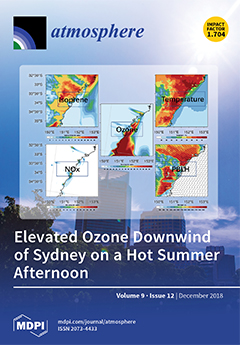Managed grassland is occasionally renovated to maintain plant productivity by killing old vegetation, ploughing, and reseeding. This study aimed to investigate the combined effect of grassland renovation and long-term manure application on the temporal dynamics of nitrous oxide (N
2O) emission and nitrate nitrogen (NO
3−–N) leaching. The study was conducted from September 2013 to September 2016 in a managed grassland renovated in September 2013. In this grassland, two treatments were managed—chemical fertilizer application (F treatment) and the combined application of chemical fertilizer and beef cattle manure (MF treatment)—for eight years before the renovation. The control treatment without fertilization (CT) was newly established in the F treatment. The soil N
2O flux was measured using a closed chamber method. A leachate sample was collected using a tension-free lysimeter that was installed at the bottom of the Ap horizon (25 cm deep), and total NO
3−–N leaching was calculated from leachate NO
3−–N concentration and drainage volume was estimated by the water balance method. In the first year after renovation, the absence of plant nitrogen uptake triggered NO
3−–N leaching following rainfall during renovation and increased drainage water after thawing. NO
3−–N movement from topsoil to deeper soil enhanced N
2O production and emission from the soil. N
2O emission in MF treatment was 1.6–2.0 times larger than those of CT and F treatments, and NO
3−–N leaching in MF treatment was 2.3–2.6 times larger than those of CT and F treatments in the first year. Mineral nitrogen release derived from long-term manure application increased NO
3−–N leaching and N
2O emission. In the second year, N
2O emission and NO
3−–N leaching significantly decreased from the first year because of increased plant N uptake and decreased mineral nitrogen surplus, and no significant differences in N
2O emission and NO
3−–N leaching were observed among the treatments. In the second and third years, NO
3−–N leaching was regulated by plant nitrogen uptake. There were no significant differences in NO
3−–N leaching among the treatments, but N
2O emission in MF treatment was significantly smaller than in the F treatment. Long-term manure application could be a possible option to mitigate N
2O emission in permanent grassland; however, the risk of increased NO
3−–N leaching and N
2O emission in the renovation year induced by manure nitrogen release should be noted.
Full article





